Anodic Catalyst Support via Titanium Dioxide-Graphene Aerogel (TiO2-GA) for A Direct Methanol Fuel Cell: Response Surface Approach
Abstract
1. Introduction
2. Results and Discussion
2.1. Structure of Synthesised PtRu/TiO2-GA Electrocatalyst and Electrochemical Testing
- Whenever the electrons from the carbon support material interact with the Pt catalyst, they are first moved to the Pt-C bond contact.
- After being transmitted from the Pt-C interface to the Pt surface, these electrons can subsequently be employed to speed up the methanol oxidation process.
- Once the Pt catalyst uses these electrons to speed up the process, it may eventually lose its effectiveness. Yet, by supplying a source of electrons, the electron transfer from the support material contributes to maintaining the catalytic activity of the Pt catalyst.
2.2. One-Factor-At-A-Time
2.3. Optimisation Using RSM
(−235.21) × A2 + (−164.13) × B2 + (−35.57) × C2
2.4. Interactions of Synthesis PtRu/TiO2-GA Optimisation
2.4.1. Physical Characterisation
2.4.2. Electrochemical Evolution
2.5. Passive Single Cell Performance
3. Experimental Section
3.1. Materials and Chemicals
3.2. Preparation of the PtRu/TiO2-GA Electrocatalyst
3.3. Electrocatalyst Characterisation and Electrochemical Testing
3.4. Experimental Design
3.4.1. One-Factor-At-A-Time (OFAT)
3.4.2. Response Surface Methodology
3.5. Preparation of MEA
3.6. DMFC Performance Test
4. Conclusions
Supplementary Materials
Author Contributions
Funding
Data Availability Statement
Acknowledgments
Conflicts of Interest
References
- Mallakpour, S.; Zhiani, M.; Barati, A.; Rostami, H. Improving the direct methanol fuel cell performance with poly(vinyl alcohol)/titanium dioxide nanocomposites as a novel electrolyte additive. Int. J. Hydrogen Energy 2013, 38, 12418–12426. [Google Scholar] [CrossRef]
- Basri, S.; Kamarudin, S.K.; Daud, W.R.W.; Ahmad, M.M. Non-linear optimization of passive direct methanol fuel cell (DMFC). Int. J. Hydrogen Energy 2010, 35, 1759–1768. [Google Scholar] [CrossRef]
- Sharaf, O.Z.; Orhan, M.F. An overview of fuel cell technology: Fundamentals and applications. Renew. Sustain. Energy Rev. 2014, 32, 810–853. [Google Scholar] [CrossRef]
- Andújar, J.M.M.; Segura, F. Fuel cells: History and updating. A walk along two centuries. Renew. Sustain. Energy Rev. 2009, 13, 2309–2322. [Google Scholar] [CrossRef]
- Yuan, W.; Zhou, B.; Deng, J.; Tang, Y.; Zhang, Z.; Li, Z. Overview on the developments of vapor-feed direct methanol fuel cells. Int. J. Hydrogen Energy 2014, 39, 6689–6704. [Google Scholar] [CrossRef]
- Niu, H.; Xia, C.; Huang, L.; Zaman, S.; Maiyalagan, T.; Guo, W.; You, B.; Xia, B. Rational design and synthesis of one-dimensional platinum-based nanostructures for oxygen-reduction electrocatalysis. Chin. J. Catal. 2022, 43, 1459–1472. [Google Scholar] [CrossRef]
- Ye, F.; Liu, H.; Feng, Y.; Li, J.; Wang, X.; Yang, J. A solvent approach to the size-controllable synthesis of ultrafine Pt catalysts for methanol oxidation in direct methanol fuel cells. Electrochim. Acta 2014, 117, 480–485. [Google Scholar] [CrossRef]
- Mehmood, A.; Ha, H.Y.H. Performance restoration of direct methanol fuel cells in long-term operation using a hydrogen evolution method. Appl. Energy 2014, 114, 164–171. [Google Scholar] [CrossRef]
- Mekhilef, S.; Saidur, R.; Safari, A. Comparative study of different fuel cell technologies. Renew. Sustain. Energy Rev. 2012, 16, 981–989. [Google Scholar] [CrossRef]
- Ball, M.; Wietschel, M. The future of hydrogen—Opportunities and challenges. Int. J. Hydrogen Energy 2009, 34, 615–627. [Google Scholar] [CrossRef]
- Abdullah, N.; Kamarudin, S.K. Titanium dioxide in fuel cell technology: An overview. J. Power Sources 2015, 278, 109–118. [Google Scholar] [CrossRef]
- Thiam, H.S.; Daud, W.R.W.; Kamarudin, S.K.; Mohamad, A.B.; Kadhum, A.A.H.; Loh, K.S.; Majlan, E.H. Nafion/Pd-SiO2 nanofiber composite membranes for direct methanol fuel cell applications. Int. J. Hydrogen Energy 2013, 38, 9474–9483. [Google Scholar] [CrossRef]
- Gustavsson, M.; Ekström, H.; Hanarp, P.; Eurenius, L.; Lindbergh, G.; Olsson, E.; Kasemo, B. Thin film Pt/TiO2 catalysts for the polymer electrolyte fuel cell. J. Power Sources 2007, 163, 671–678. [Google Scholar] [CrossRef]
- Muthuraman, N.; Guruvaiah, P.K.; Gnanabaskara Agneeswara, P. High performance carbon supported Pt–WO3 nanocomposite electrocatalysts for polymer electrolyte membrane fuel cell. Mater. Chem. Phys. 2012, 133, 924–931. [Google Scholar] [CrossRef]
- Dou, M.; Hou, M.; Liang, D.; Lu, W.; Shao, Z.; Yi, B. SnO2 nanocluster supported Pt catalyst with high stability for proton exchange membrane fuel cells. Electrochim. Acta 2013, 92, 468–473. [Google Scholar] [CrossRef]
- Puigdollers, A.R.; Schlexer, P.; Tosoni, S.; Pacchioni, G. Increasing oxide reducibility: The role of metal/oxide interfaces in the formation of oxygen vacancies. ACS Catal. 2017, 7, 6493–6513. [Google Scholar] [CrossRef]
- Yu, T.; Liu, L.; Li, L.; Yang, F. A self-biased fuel cell with TiO2/g-C3N4 anode catalyzed alkaline pollutant degradation with light and without light—What is the degradation mechanism? Electrochim. Acta 2016, 210, 122–129. [Google Scholar] [CrossRef]
- Shahid, M.; Zhan, Y.; Sagadeven, S.; Akermi, M.; Ahmad, W.; Hatamvand, M.; Oh, W.C. Platinum doped titanium dioxide nanocomposite an efficient platform as anode material for methanol oxidation. J. Mater. Res. Technol. 2021, 15, 6551–6561. [Google Scholar] [CrossRef]
- Zhao, L.; Wang, Z.B.; Liu, J.; Zhang, J.J.; Sui, X.L.; Zhang, L.M.; Gu, D.M. Facile one-pot synthesis of Pt/graphene-TiO2 hybrid catalyst with enhanced methanol electrooxidation performance. J. Power Sources 2015, 279, 210–217. [Google Scholar] [CrossRef]
- Xia, B.Y.; Wu, H.B.; Chen, J.S.; Wang, Z.; Wang, X.; Lou, X.W. Formation of Pt–TiO2–rGO 3-phase junctions with significantly enhanced electro-activity for methanol oxidation. Phys. Chem. Chem. Phys. 2011, 14, 473–476. [Google Scholar] [CrossRef]
- Yan, D.J.; Zhu, X.D.; Mao, Y.C.; Qiu, S.Y.; Gu, L.L.; Feng, Y.J.; Sun, K.N. Hierarchically organized CNT@TiO2@Mn3O4 nanostructures for enhanced lithium storage performance. J. Mater. Chem. A 2017, 5, 17048–17055. [Google Scholar] [CrossRef]
- Xia, T.; Zhang, W.; Wang, Z.; Zhang, Y.; Song, X.; Murowchick, J.; Battaglia, V.; Liu, G.; Chen, X. Amorphous carbon-coated TiO2 nanocrystals for improved lithium-ion battery and photocatalytic performance. Nano Energy 2014, 6, 109–118. [Google Scholar] [CrossRef]
- Chen, Y.; Li, Z.; Shi, S.; Song, C.; Jiang, Z.; Cui, X. Scalable synthesis of TiO2 crystallites embedded in bread-derived carbon matrix with enhanced lithium storage performance. J. Mater. Sci. Mater. Electron. 2017, 28, 9206–9220. [Google Scholar] [CrossRef]
- Mo, R.; Lei, Z.; Sun, K.; Rooney, D. Facile Synthesis of Anatase TiO2 Quantum-Dot/Graphene-Nanosheet Composites with Enhanced Electrochemical Performance for Lithium-Ion Batteries. Adv. Mater. 2014, 26, 2084–2088. [Google Scholar] [CrossRef]
- Wang, Z.; Sha, J.; Liu, E.; He, C.; Shi, C.; Li, J.; Zhao, N. A large ultrathin anatase TiO2 nanosheet/reduced graphene oxide composite with enhanced lithium storage capability. J. Mater. Chem. A 2014, 2, 8893–8901. [Google Scholar] [CrossRef]
- Song, T.; Han, H.; Choi, H.; Lee, J.W.; Park, H.; Lee, S.; Park, W.; Kim, S.; Liu, L.; Paik, U. TiO2 nanotube branched tree on a carbon nanofiber nanostructure as an anode for high energy and power lithium ion batteries. Nano Res. 2015, 7, 491–501. [Google Scholar] [CrossRef]
- Li, X.; Chen, Y.; Zhou, L.; Mai, Y.W.; Huang, H. Exceptional electrochemical performance of porous TiO2–carbon nanofibers for lithium ion battery anodes. J. Mater. Chem. A 2014, 2, 3875–3880. [Google Scholar] [CrossRef]
- Wang, B.; Xin, H.; Li, X.; Cheng, J.; Yang, G.; Nie, F. Mesoporous CNT@TiO2-C Nanocable with Extremely Durable High Rate Capability for Lithium-Ion Battery Anodes. Sci. Rep. 2014, 4, 3729. [Google Scholar] [CrossRef]
- Ding, H.; Zhang, Q.; Liu, Z.; Wang, J.; Ma, R.; Fan, L.; Wang, T.; Zhao, J.; Lu, X.; Yu, X.; et al. TiO2 quantum dots decorated multi-walled carbon nanotubes as the multifunctional separator for highly stable lithium sulfur batteries. Electrochim. Acta 2018, 284, 314–320. [Google Scholar] [CrossRef]
- Basri, S.; Kamarudin, S.K.; Daud, W.R.W.W.; Yaakob, Z.; Kadhum, A.A.H.H. Novel anode catalyst for direct methanol fuel cells. Sci. World J. 2014, 2014, 547604. [Google Scholar] [CrossRef]
- Kim, H.J.; Kim, D.Y.; Han, H.; Shul, Y.G. PtRu/C-Au/TiO2 electrocatalyst for a direct methanol fuel cell. J. Power Sources 2006, 159, 484–490. [Google Scholar] [CrossRef]
- Abdullah, N.; Kamarudin, S.K.; Shyuan, L.K.; Karim, N.A. Synthesis and optimization of PtRu/TiO2-CNF anodic catalyst for direct methanol fuel cell. Int. J. Hydrogen Energy 2019, 44, 30543–30552. [Google Scholar] [CrossRef]
- Abdullah, N.; Saidur, R.; Zainoodin, A.M.; Aslfattahi, N. Optimization of electrocatalyst performance of platinum–ruthenium induced with MXene by response surface methodology for clean energy application. J. Clean. Prod. 2020, 277, 123395. [Google Scholar] [CrossRef]
- Ahmad, M.M.M.; Kamarudin, S.K.K.; Daud, W.R.W.R.W.; Yaakub, Z. High power passive μDMFC with low catalyst loading for small power generation. Energy Convers. Manag. 2010, 51, 821–825. [Google Scholar] [CrossRef]
- Shaari, N.; Kamarudin, S.K. ScienceDirect Performance of crosslinked sodium alginate / sulfonated graphene oxide as polymer electrolyte membrane in DMFC application : RSM optimization approach. Int. J. Hydrogen Energy 2018, 43, 22986–23003. [Google Scholar] [CrossRef]
- You, P.Y.; Kamarudin, S.K.; Masdar, M.S.; Zainoodin, A.M. Modification and optimization of rice husk ash bio-filler in sulfonated polyimide membrane for direct methanol fuel cell. Sains Malays. 2020, 49, 3125–3143. [Google Scholar] [CrossRef]
- Bezerra, M.A.; Santelli, R.E.; Oliveira, E.P.; Villar, L.S.; Escaleira, L.A. Response surface methodology (RSM) as a tool for optimization in analytical chemistry. Talanta 2008, 76, 965–977. [Google Scholar] [CrossRef] [PubMed]
- Fletcher, R. Practical Methods of Optimization; John Wiley & Sons: Hoboken, NJ, USA, 2000; pp. 1–436. [Google Scholar] [CrossRef]
- Asfaram, A.; Ghaedi, M.; Agarwal, S.; Tyagi, I.; Gupta, V.K. Removal of basic dye Auramine-O by ZnS:Cu nanoparticles loaded on activated carbon: Optimization of parameters using response surface methodology with central composite design. RSC Adv. 2015, 5, 18438–18450. [Google Scholar] [CrossRef]
- Dharma, S.; Masjuki, H.H.; Ong, H.C.; Sebayang, A.H.; Silitonga, A.S.; Kusumo, F.; Mahlia, T.M.I. Optimization of biodiesel production process for mixed Jatropha curcas–Ceiba pentandra biodiesel using response surface methodology. Energy Convers. Manag. 2016, 115, 178–190. [Google Scholar] [CrossRef]
- Danmaliki, G.I.; Saleh, T.A.; Shamsuddeen, A.A. Response surface methodology optimization of adsorptive desulfurization on nickel/activated carbon. Chem. Eng. J. 2017, 313, 993–1003. [Google Scholar] [CrossRef]
- Sulaiman, N.S.; Hashim, R.; Mohamad Amini, M.H.; Danish, M.; Sulaiman, O. Optimization of activated carbon preparation from cassava stem using response surface methodology on surface area and yield. J. Clean. Prod. 2018, 198, 1422–1430. [Google Scholar] [CrossRef]
- Caponi, N.; Collazzo, G.C.; Da Silveira Salla, J.; Jahn, S.L.; Dotto, G.L.; Foletto, E.L. Optimisation of crystal violet removal onto raw kaolin using response surface methodology. Int. J. Environ. Technol. Manag. 2019, 22, 85–100. [Google Scholar] [CrossRef]
- Myers, R.H.; Montgomery, D.C.; Anderson-Cook, C.M. Response Surface Methodology: Process and Product Optimization Using Designed Experiments, 4th ed.; John Wiley & Sons: Hoboken, NJ, USA, 2016. [Google Scholar]
- Khatti, T.; Naderi-Manesh, H.; Kalantar, S.M. Application of ANN and RSM techniques for modeling electrospinning process of polycaprolactone. Neural Comput. Appl. 2019, 31, 239–248. [Google Scholar] [CrossRef]
- Deivaraj, T.C.; Lee, J.Y. Preparation of carbon-supported PtRu nanoparticles for direct methanol fuel cell applications—A comparative study. J. Power Sources 2005, 142, 43–49. [Google Scholar] [CrossRef]
- Neaţu, Ş.; Neaţu, F.; Chirica, I.M.; Borbáth, I.; Tálas, E.; Tompos, A.; Somacescu, S.; Osiceanu, P.; Folgado, M.A.; Chaparro, A.M.; et al. Recent progress in electrocatalysts and electrodes for portable fuel cells. J. Mater. Chem. A 2021, 9, 17065–17128. [Google Scholar] [CrossRef]
- Wakisaka, M.; Mitsui, S.; Hirose, Y.; Kawashima, K.; Uchida, H.; Watanabe, M. Electronic structures of Pt-Co and Pt-Ru alloys for CO-tolerant anode catalysts in polymer electrolyte fuel cells studied by EC-XPS. J. Phys. Chem. B 2006, 110, 23489–23496. [Google Scholar] [CrossRef]
- Li, Y.; Zhang, Y.; Qian, K.; Huang, W. Metal-Support Interactions in Metal/Oxide Catalysts and Oxide-Metal Interactions in Oxide/Metal Inverse Catalysts. ACS Catal. 2022, 12, 1268–1287. [Google Scholar] [CrossRef]
- Yi, Q.; Chen, A.; Huang, W.; Zhang, J.; Liu, X.; Xu, G.; Zhou, Z. Titanium-supported nanoporous bimetallic Pt-Ir electrocatalysts for formic acid oxidation. Electrochem. Commun. 2007, 9, 1513–1518. [Google Scholar] [CrossRef]
- Kolla, P.; Smirnova, A. Methanol oxidation on hybrid catalysts: PtRu/C nanostructures promoted with cerium and titanium oxides. Int. J. Hydrogen Energy 2013, 38, 15152–15159. [Google Scholar] [CrossRef]
- Ito, Y.; Takeuchi, T.; Tsujiguchi, T.; Abdelkareem, M.A.; Nakagawa, N. Ultrahigh methanol electro-oxidation activity of PtRu nanoparticles prepared on TiO2-embedded carbon nanofiber support. J. Power Sources 2013, 242, 280–288. [Google Scholar] [CrossRef]
- Chen, W.; Wei, X.; Zhang, Y. A comparative study of tungsten-modified PtRu electrocatalysts for methanol oxidation. Int. J. Hydrogen Energy 2014, 39, 6995–7003. [Google Scholar] [CrossRef]
- Tsukagoshi, Y.; Ishitobi, H.; Nakagawa, N. Improved performance of direct methanol fuel cells with the porous catalyst layer using highly-active nanofiber catalyst. Carbon Resour. Convers. 2018, 1, 61–72. [Google Scholar] [CrossRef]
- Yang, Z.; Choi, D.; Kerisit, S.; Rosso, K.M.; Wang, D.; Zhang, J.; Graff, G.; Liu, J. Nanostructures and lithium electrochemical reactivity of lithium titanites and titanium oxides: A review. J. Power Sources 2009, 192, 588–598. [Google Scholar] [CrossRef]
- Antolini, E.; Cardellini, F. Formation of carbon supported PtRu alloys: An XRD analysis. J. Alloys Compd. 2001, 315, 118–122. [Google Scholar] [CrossRef]
- Nassr, A.B.A.A.; Bron, M. Microwave-Assisted Ethanol Reduction as a New Method for the Preparation of Highly Active and Stable CNT-Supported PtRu Electrocatalysts for Methanol Oxidation. ChemCatChem 2013, 5, 1472–1480. [Google Scholar] [CrossRef]
- Cordero-Borboa, A.E.; Sterling-Black, E.; Gómez-Cortés, A.; Vázquez-Zavala, A. X-ray diffraction evidence of the single solid solution character of bi-metallic Pt-Pd catalyst particles on an amorphous SiO2 substrate. Appl. Surf. Sci. 2003, 220, 169–174. [Google Scholar] [CrossRef]
- Argyle, M.D.; Bartholomew, C.H. Heterogeneous Catalyst Deactivation and Regeneration: A Review. Catalysts 2015, 5, 145–269. [Google Scholar] [CrossRef]
- Alothman, Z.A. A Review: Fundamental Aspects of Silicate Mesoporous Materials. Materials 2012, 5, 2874–2902. [Google Scholar] [CrossRef]
- Pal, N.; Bhaumik, A. Mesoporous materials: Versatile supports in heterogeneous catalysis for liquid phase catalytic transformations. RSC Adv. 2015, 5, 24363–24391. [Google Scholar] [CrossRef]
- Bagheri, S.; Muhd Julkapli, N.; Bee Abd Hamid, S. Titanium dioxide as a catalyst support in heterogeneous catalysis. Sci. World J. 2014, 2014, 727496. [Google Scholar] [CrossRef]
- Wang, J.; Fu, C.; Wang, X.; Yao, Y.; Sun, M.; Wang, L.; Liu, T. Three-dimensional hierarchical porous TiO2/graphene aerogels as promising anchoring materials for lithium–sulfur batteries. Electrochim. Acta 2018, 292, 568–574. [Google Scholar] [CrossRef]
- Ashutosh Tiwari, M.S. Graphene Materials: Fundamentals and Emerging Applications; Wiley: Hoboken, NJ, USA, 2015; pp. 1–424. Available online: https://books.google.com.my/books?hl=en&lr=&id=0up8CAAAQBAJ&oi=fnd&pg=PP1&dq=Tiwari+A.;+Syväjärvi+M.;+(2015)+Graphene+materials:+fundamentals+and+emerging+applications.+Hoboken,+Wiley.&ots=GixKmanSs8&sig=G9K3kfMbBnXN-zApXdOeQQ4JwXw#v=onepage&q&f=false (accessed on 17 May 2022).
- Cooper, K. Situ PEM FC Electrochemical Surface Area And Catalyst Utilization Measurement; Scribner Associates Inc.: Southern Pines, NC, USA, 2009. [Google Scholar]
- Reghunath, S.; Pinheiro, D.; KR, S.D. A review of hierarchical nanostructures of TiO2: Advances and applications. Appl. Surf. Sci. Adv. 2021, 3, 100063. [Google Scholar] [CrossRef]
- Ali, H.; Zaman, S.; Majeed, I.; Kanodarwala, F.K.; Nadeem, M.A.; Stride, J.A.; Nadeem, M.A. Porous Carbon/rGO Composite: An Ideal Support Material of Highly Efficient Palladium Electrocatalysts for the Formic Acid Oxidation Reaction. ChemElectroChem 2017, 4, 3126–3133. [Google Scholar] [CrossRef]
- Zaman, S.; Wang, M.; Liu, H.; Sun, F.; Yu, Y.; Shui, J.; Chen, M.; Wang, H. Carbon-based catalyst supports for oxygen reduction in proton-exchange membrane fuel cells. Trends Chem. 2022, 4, 886–906. [Google Scholar] [CrossRef]
- Abdullah, N.; Kamarudin, S.K.; Shyuan, L.K.; Karim, N.A. Fabrication and Characterization of New Composite Tio2 Carbon Nanofiber Anodic Catalyst Support for Direct Methanol Fuel Cell via Electrospinning Method. Nanoscale Res. Lett. 2017, 12, 613. [Google Scholar] [CrossRef] [PubMed]
- Shimizu, T.; Momma, T.; Mohamedi, M.; Osaka, T.; Sarangapani, S. Design and fabrication of pumpless small direct methanol fuel cells for portable applications. J. Power Sources 2004, 137, 277–283. [Google Scholar] [CrossRef]
- Hashim, N.; Kamarudin, S.K.; Daud, W.R.W. Design, fabrication and testing of a PMMA-based passive single-cell and a multi-cell stack micro-DMFC. Int. J. Hydrog. Energy 2009, 34, 8263–8269. [Google Scholar] [CrossRef]
- Jamal, P.; Wan Nawawi, W.M.F.; Alam, M.Z. Optimum medium components for biosurfactant production by Klebsiella pneumoniae WMF02 utilizing sludge palm oil as a substrate. Aust. J. Basic Appl. Sci. 2012, 6, 100–108. [Google Scholar]
- Hasran, U.A.; Kamarudin, S.K.; Daud, W.R.W.; Majlis, B.Y.; Mohamad, A.B.; Kadhum, A.A.H.; Ahmad, M.M. Optimization of hot pressing parameters in membrane electrode assembly fabrication by response surface method. Int. J. Hydrogen Energy 2013, 38, 9484–9493. [Google Scholar] [CrossRef]
- Zainoodin, A.M.; Kamarudin, S.K.; Masdar, M.S.; Daud, W.R.W.; Mohamad, A.B.; Sahari, J. High power direct methanol fuel cell with a porous carbon nanofiber anode layer. Appl. Energy 2014, 113, 946–954. [Google Scholar] [CrossRef]
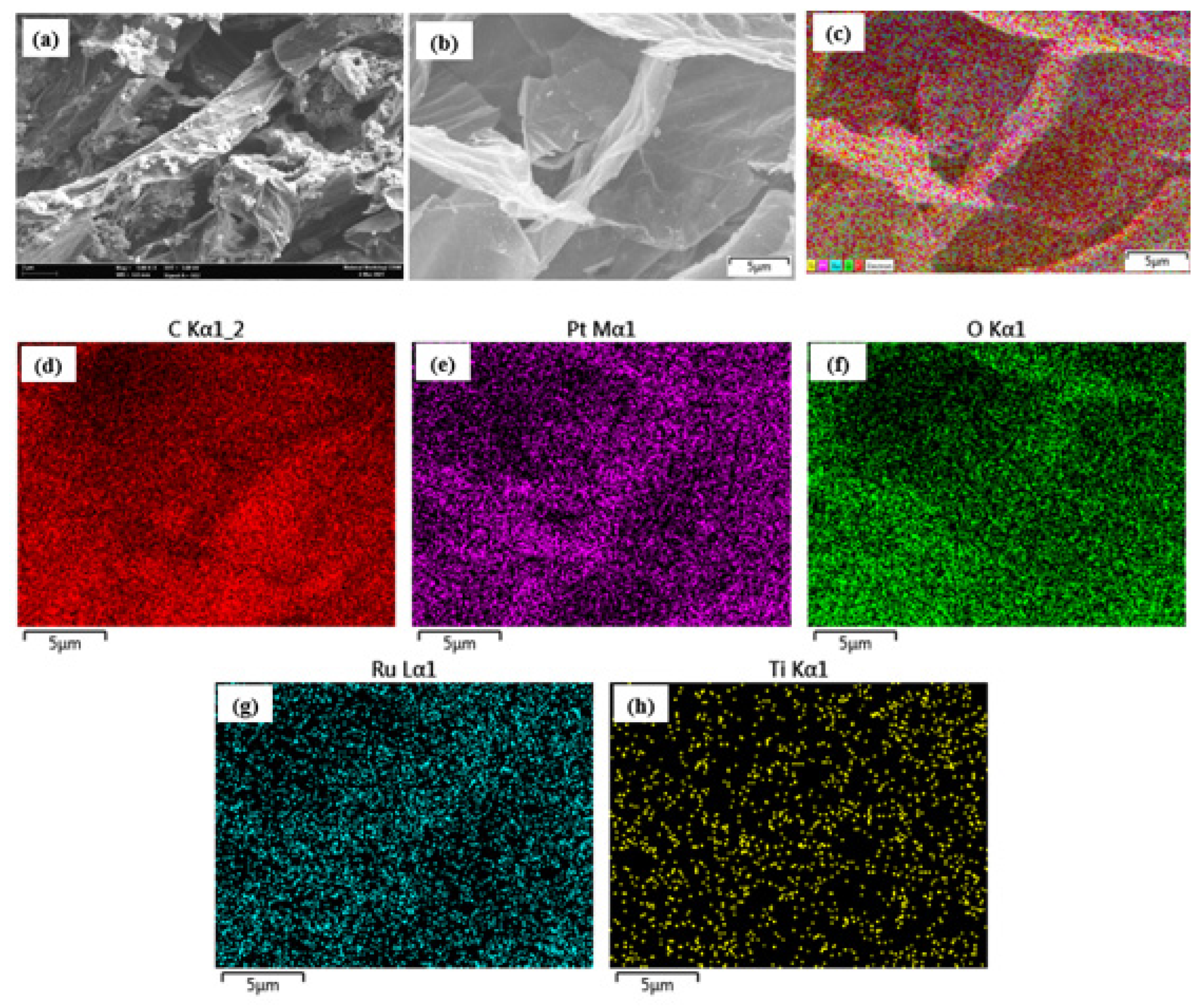

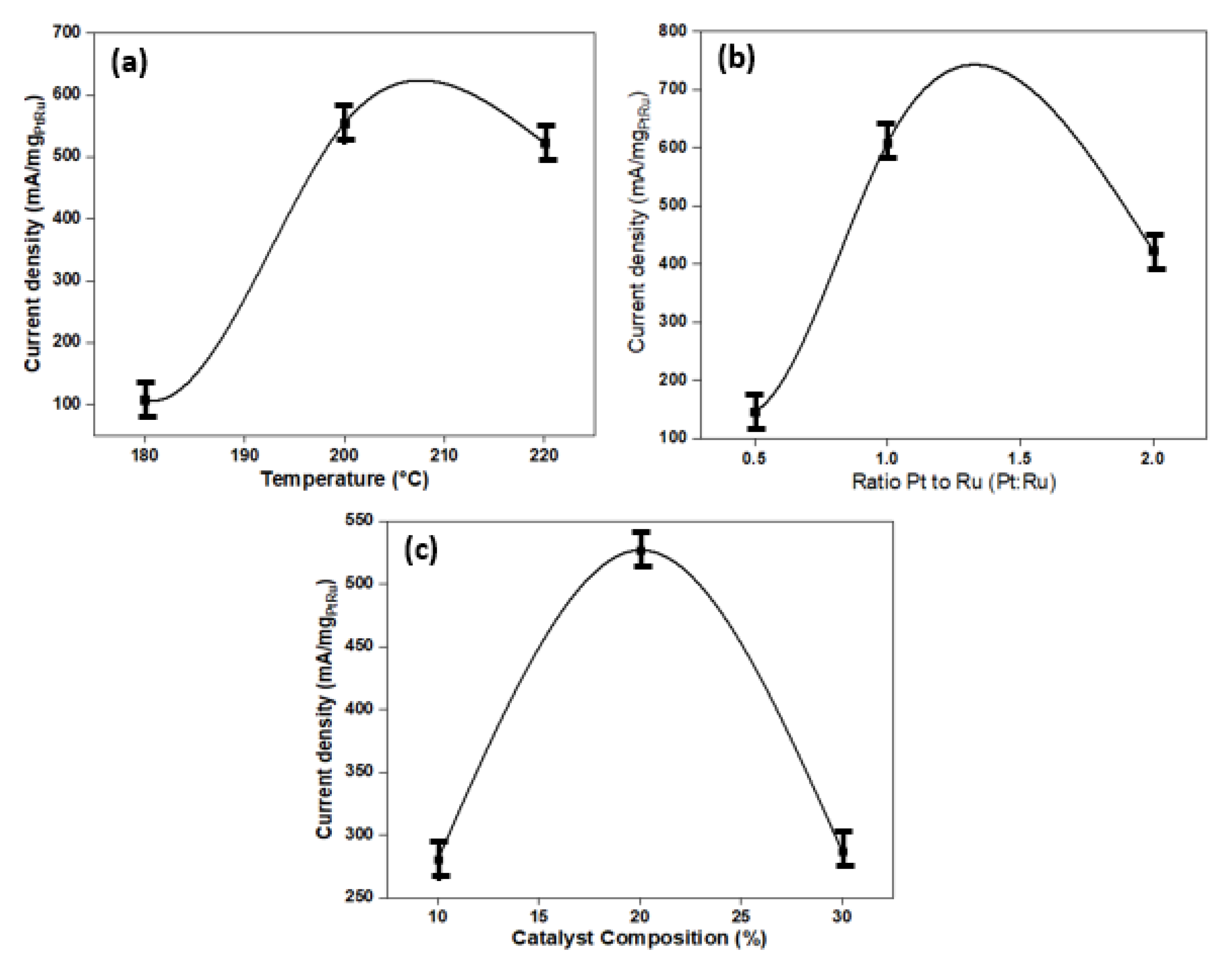
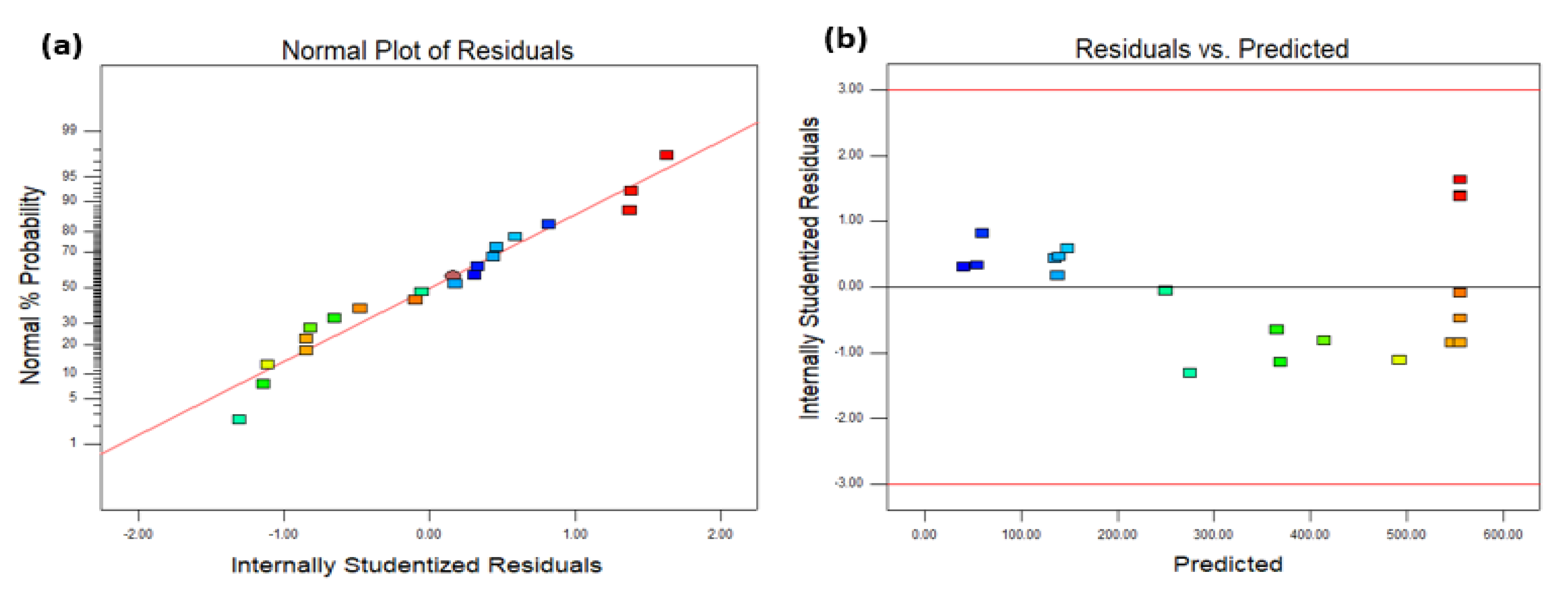
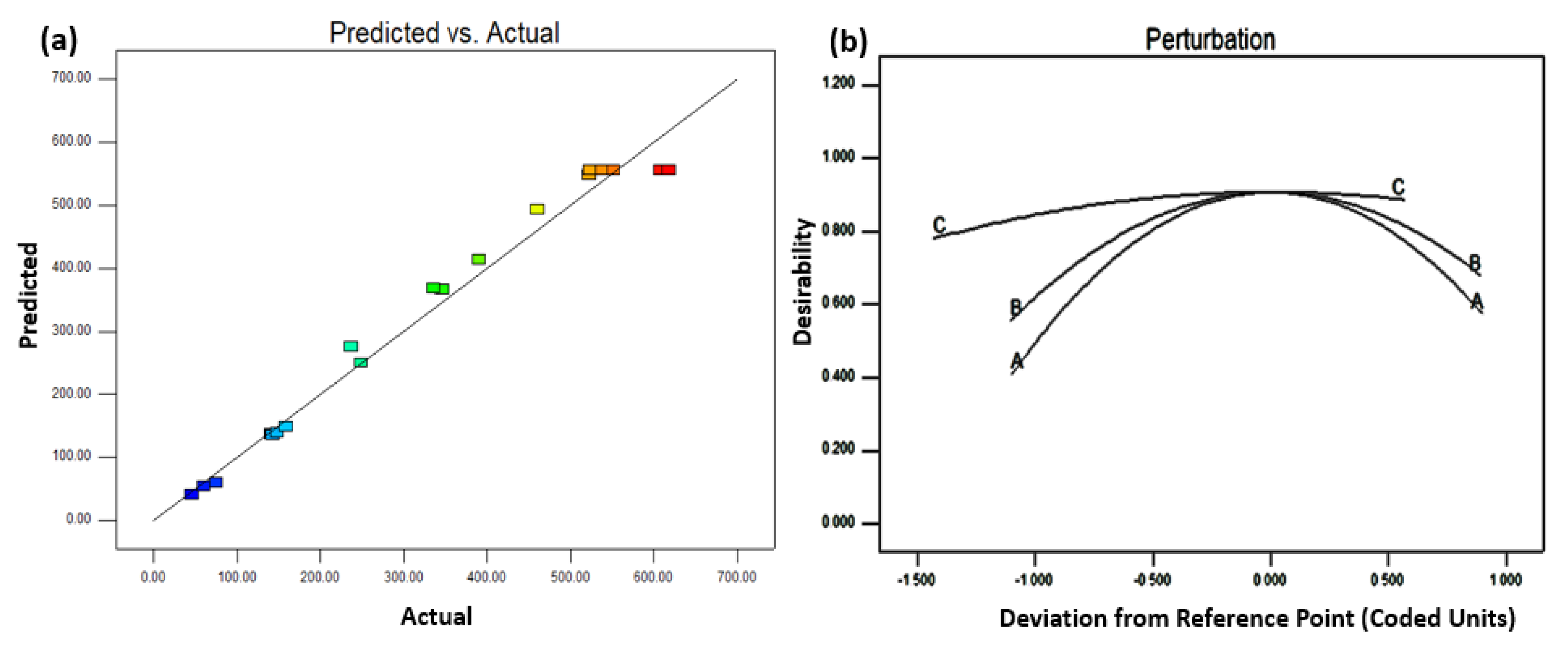

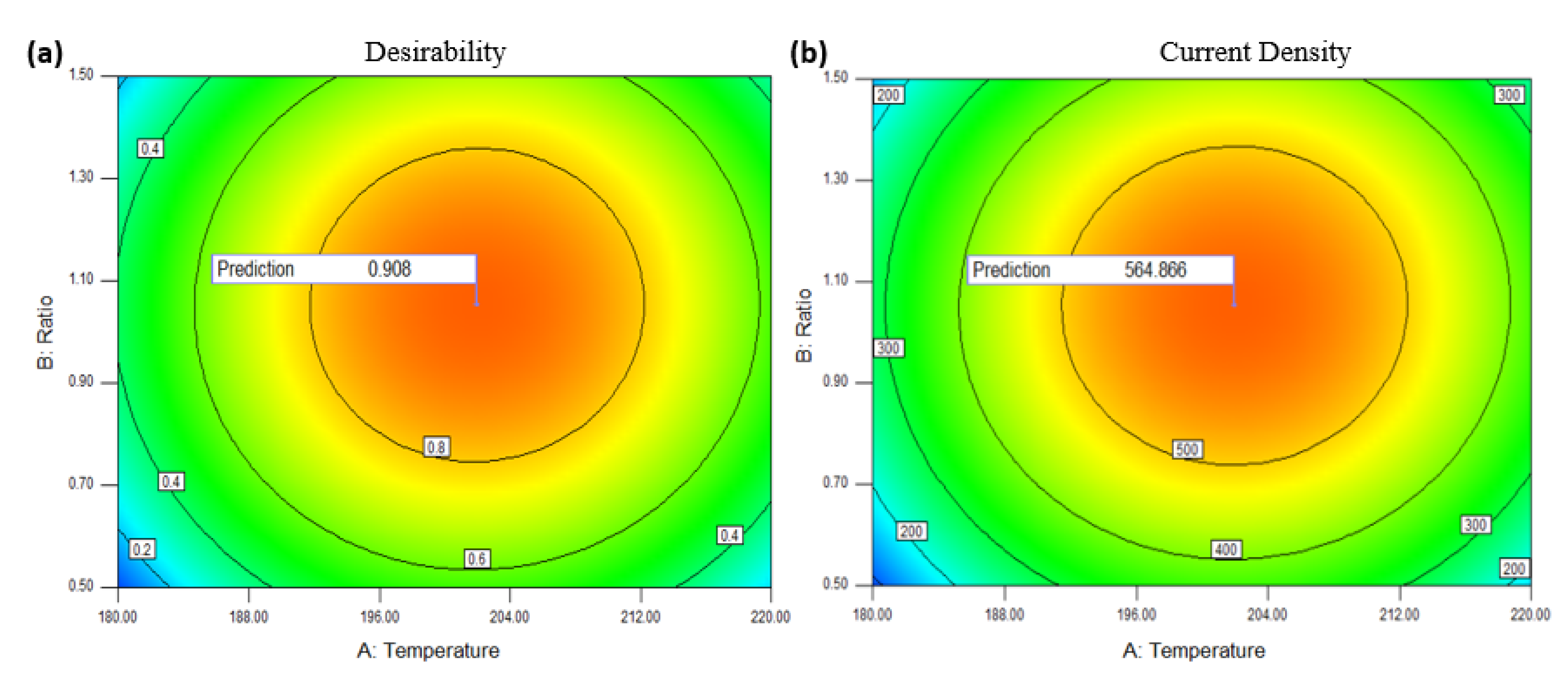
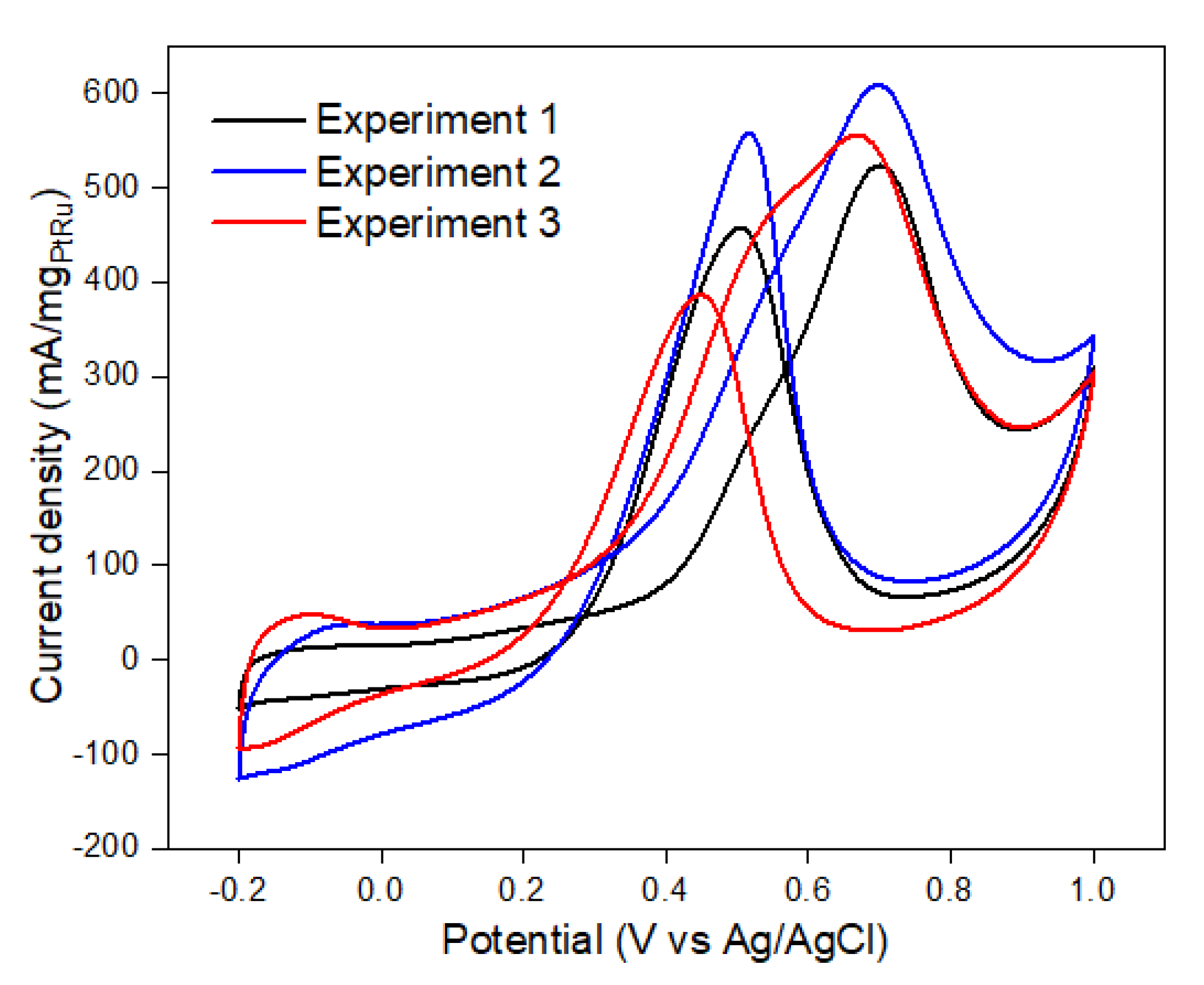
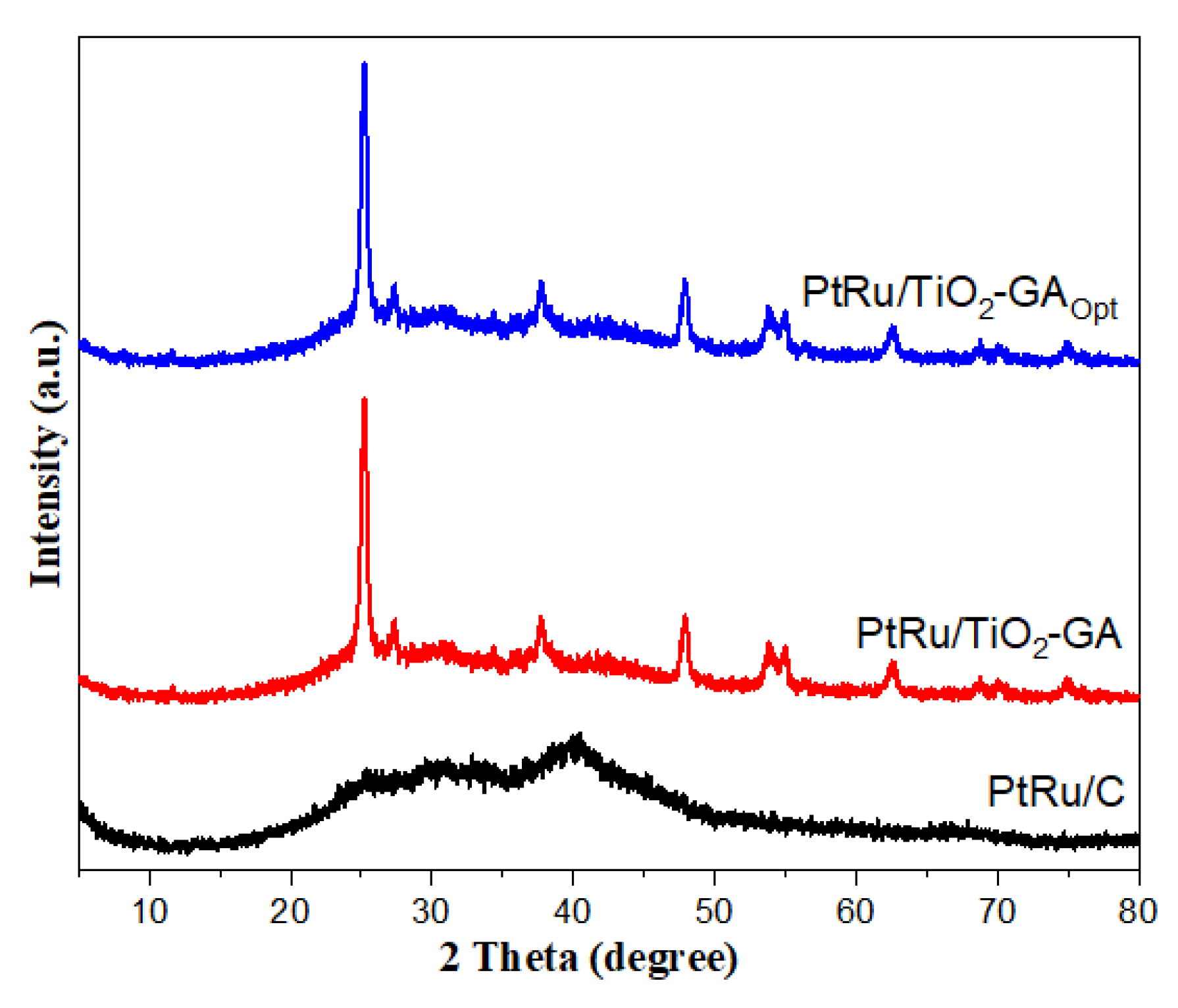
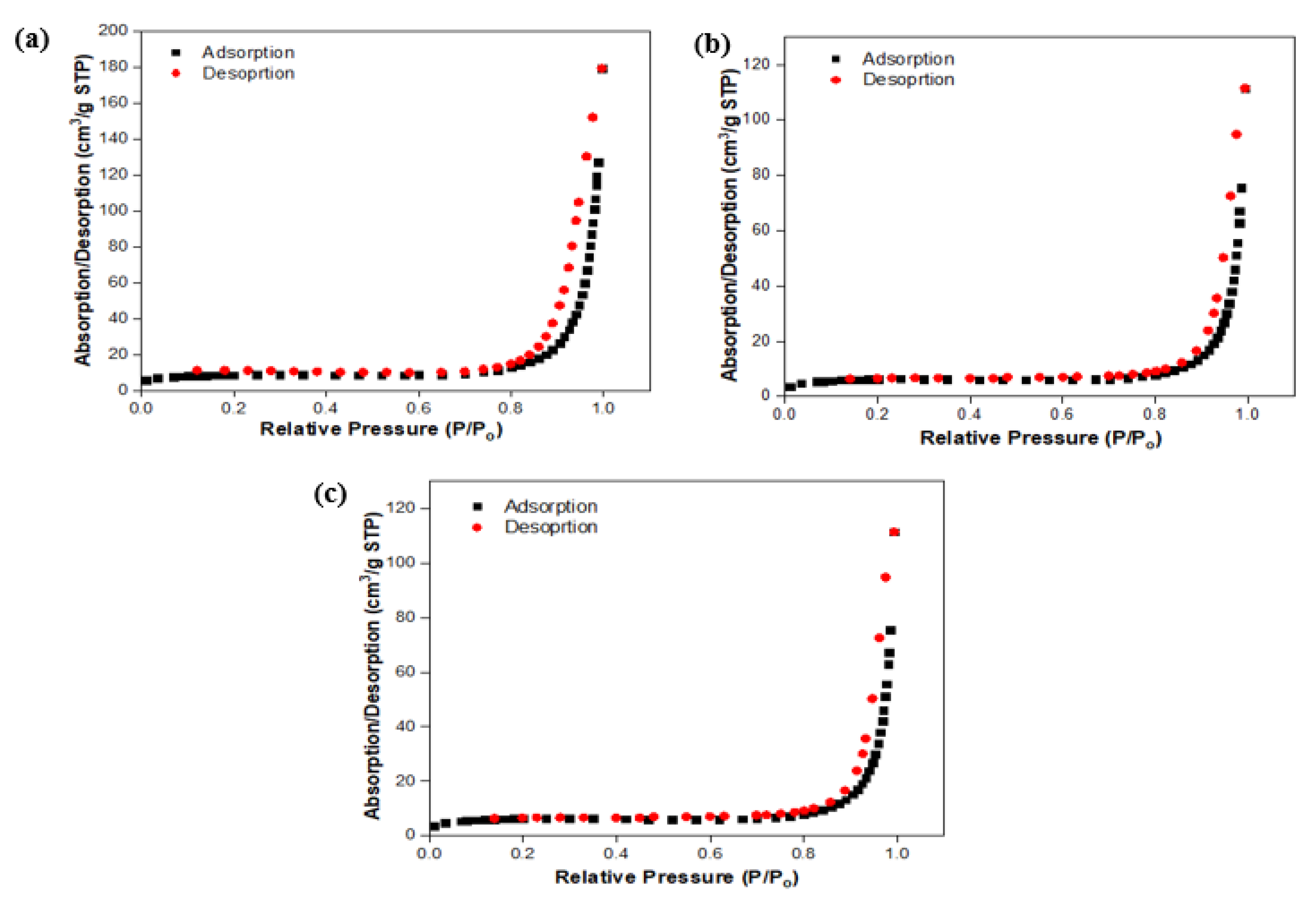

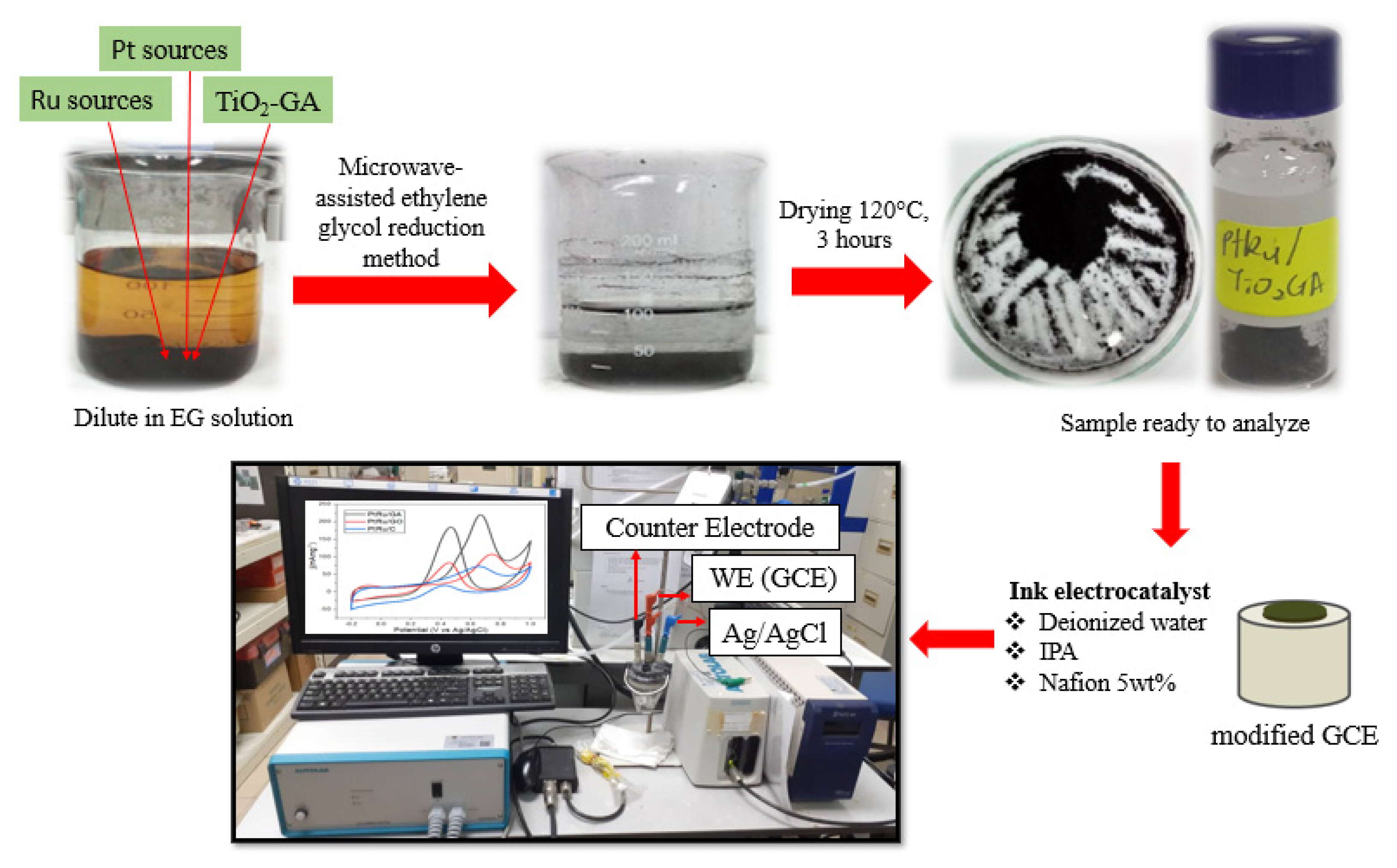
| Run | Factor A | Factor B | Factor C | Response 1 | |
|---|---|---|---|---|---|
| Predicted Value | Actual Value | ||||
| 1 | 200.00 | 1.00 | 20.00 | 555.53 | 617.67 |
| 2 | 200.00 | 1.00 | 15.00 | 492.56 | 460.39 |
| 3 | 200.00 | 1.00 | 20.00 | 555.53 | 537.40 |
| 4 | 200.00 | 1.00 | 25.00 | 547.38 | 522.85 |
| 5 | 180.00 | 1.00 | 20.00 | 275.27 | 237.45 |
| 6 | 220.00 | 1.50 | 25.00 | 249.99 | 249.02 |
| 7 | 180.00 | 0.50 | 25.00 | 54.39 | 60.5 |
| 8 | 220.00 | 0.50 | 25.00 | 139.71 | 148.20 |
| 9 | 220.00 | 1.50 | 15.00 | 134.95 | 143.01 |
| 10 | 200.00 | 1.00 | 20.00 | 555.53 | 523.22 |
| 11 | 200.00 | 1.50 | 20.00 | 414.05 | 390.39 |
| 12 | 200.00 | 0.50 | 20.00 | 368.77 | 335.74 |
| 13 | 180.00 | 1.50 | 15.00 | 40.05 | 45.73 |
| 14 | 220.00 | 0.50 | 15.00 | 138.07 | 141.35 |
| 15 | 200.00 | 1.00 | 20.00 | 555.53 | 608.41 |
| 16 | 180.00 | 0.50 | 15.00 | 59.79 | 74.94 |
| 17 | 200.00 | 1.00 | 20.00 | 555.53 | 607.98 |
| 18 | 220.00 | 1.00 | 20.00 | 365.37 | 346.51 |
| 19 | 180.00 | 1.50 | 25.00 | 148.06 | 158.94 |
| 20 | 200.00 | 1.00 | 20.00 | 555.53 | 551.9 |
| Source | Sum of Squares | DF | Mean Square | F-Value | p-Value Prob > F |
|---|---|---|---|---|---|
| Model | 7.74 × 105 | 9 | 86,002.39 | 52.34 | <0.0001 significant |
| A: Temperature | 20,298.36 | 1 | 20,298.36 | 12.35 | 0.0056 |
| B: Ratio Pt to Ru (Pt:Ru) | 5124.56 | 1 | 5124.56 | 3.12 | 0.1078 |
| C: Catalyst Composition (wt%) | 7512.59 | 1 | 7512.59 | 4.57 | 0.0582 |
| A2 | 1.521 × 105 | 1 | 1.521 × 105 | 92.60 | <0.0001 |
| B2 | 74,077.24 | 1 | 74,077.24 | 45.08 | <0.0001 |
| C2 | 3479.08 | 1 | 3479.08 | 2.12 | 0.1763 |
| AB | 138.13 | 1 | 138.13 | 0.084 | 0.7778 |
| AC | 24.79 | 1 | 24.79 | 0.015 | 0.9047 |
| BC | 6430.57 | 1 | 6430.57 | 3.91 | 0.0761 |
| Residual | 16,431.12 | 10 | 1643.11 | ||
| Lack of Fit | 7780.73 | 5 | 1556.15 | 0.90 | 0.5449 not significant |
| Pure Error | 8650.39 | 5 | 1730.08 | ||
| Correlation Total | 7.905 × 105 | 19 | |||
| Standard Deviation | 40.54 | R2 | 0.9792 | ||
| Mean | 338.08 | Adj R2 | 0.9605 | ||
| Pred R2 | 0.9409 | ||||
| Adeq R2 | 17.984 |
| Factor A (°C) | Factor B | Factor C (wt%) | Mass Activity (mA/mgPtRu) | Error (%) | ||||
|---|---|---|---|---|---|---|---|---|
| Prediction | 1 | 2 | 3 | Average | ||||
| 202 | 1.1 | 22 | 564.87 | 529.40 | 608.17 | 566.89 | 568.15 | 0.6 |
| Electrocatalyst | SBET (m2 g−1) | VTotal Pore | DPore (nm) | Types of Pore |
|---|---|---|---|---|
| PtRu/TiO2-GAOpt | 19.30 | 0.13 | 24.22 | Meso |
| PtRu/TiO2-GA | 22.36 | 0.45 | 31.05 | Meso |
| PtRu/C | 31.15 | 0.61 | 32.63 | Meso |
| Properties Sample Name | SBET (m2 g−1) | VTotal pore | XRD (Crystallite Size (nm) | Types of Pores |
|---|---|---|---|---|
| PtRu/C | 26.11 | 0.17 | 3.5 | Meso |
| PtRu/TiO2-GA | 19.30 | 0.11 | 3.1 | Meso |
| PtRu/TiO2-GAOpt | 17.15 | 0.10 | 2.5 | Meso |
| Electrocatalysts | Peak Potential (V vs. Ag/AgCl) | Onset Potential (V vs. Ag/AgCl) | Peak Current Density (mA mg−1) | ECSA (m2 g−1) | CO Tolerance, If/Ib |
|---|---|---|---|---|---|
| PtRu/C | 0.613 | 0.419 | 79.93 | 3.25 | 5.31 |
| PtRu/TiO2-GA | 0.676 | 0.336 | 554.67 | 23.43 | 1.44 |
| PtRu/TiO2-GAOpt | 0.693 | 0.346 | 568.15 | 30.63 | 1.09 |
| Electrocatalyst | ji (mA cm−2) | Jf (mA cm−2) | Retention Rates (%) |
|---|---|---|---|
| PtRu/C | 41.7 | 0.55 | 98.7 |
| PtRu/TiO2-GA | 38.8 | 1.53 | 96.1 |
| PtRu/TiO2-GAOpt | 35.9 | 4.05 | 88.7 |
Disclaimer/Publisher’s Note: The statements, opinions and data contained in all publications are solely those of the individual author(s) and contributor(s) and not of MDPI and/or the editor(s). MDPI and/or the editor(s) disclaim responsibility for any injury to people or property resulting from any ideas, methods, instructions or products referred to in the content. |
© 2023 by the authors. Licensee MDPI, Basel, Switzerland. This article is an open access article distributed under the terms and conditions of the Creative Commons Attribution (CC BY) license (https://creativecommons.org/licenses/by/4.0/).
Share and Cite
Osman, S.H.; Kamarudin, S.K.; Basri, S.; Karim, N.A. Anodic Catalyst Support via Titanium Dioxide-Graphene Aerogel (TiO2-GA) for A Direct Methanol Fuel Cell: Response Surface Approach. Catalysts 2023, 13, 1001. https://doi.org/10.3390/catal13061001
Osman SH, Kamarudin SK, Basri S, Karim NA. Anodic Catalyst Support via Titanium Dioxide-Graphene Aerogel (TiO2-GA) for A Direct Methanol Fuel Cell: Response Surface Approach. Catalysts. 2023; 13(6):1001. https://doi.org/10.3390/catal13061001
Chicago/Turabian StyleOsman, Siti Hasanah, Siti Kartom Kamarudin, Sahriah Basri, and Nabila A. Karim. 2023. "Anodic Catalyst Support via Titanium Dioxide-Graphene Aerogel (TiO2-GA) for A Direct Methanol Fuel Cell: Response Surface Approach" Catalysts 13, no. 6: 1001. https://doi.org/10.3390/catal13061001
APA StyleOsman, S. H., Kamarudin, S. K., Basri, S., & Karim, N. A. (2023). Anodic Catalyst Support via Titanium Dioxide-Graphene Aerogel (TiO2-GA) for A Direct Methanol Fuel Cell: Response Surface Approach. Catalysts, 13(6), 1001. https://doi.org/10.3390/catal13061001








